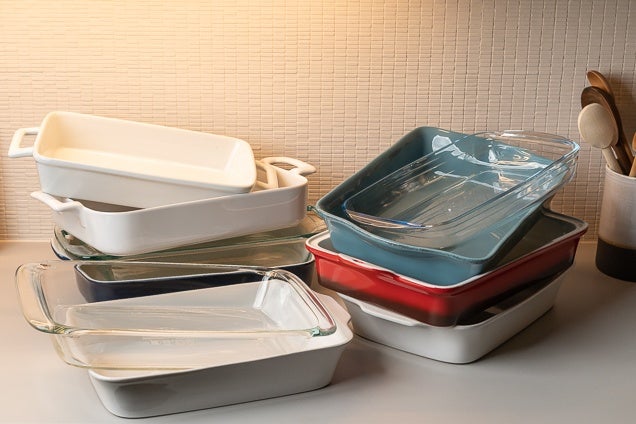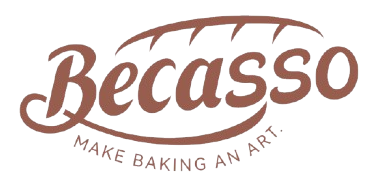Introduction
In the world of baking, the tools you use can make or break your culinary creations. From cookies to casseroles, the type of bakeware you choose directly influences the texture, flavor, and presentation of your dishes. Yet, many home bakers overlook the importance of selecting the right equipment, particularly when it comes to baking dish vs baking pan. Understanding the nuances between these two essential tools not only enhances your baking skills but also ensures your recipes turn out perfectly every time.

What is a Baking Dish?
A. Definition and Characteristics
A baking dish is a versatile kitchen staple, typically made from materials like glass, ceramic, or stoneware. These materials are known for their excellent heat retention and even distribution, which are critical for recipes that require slow, consistent cooking. Baking dishes often feature higher sides, making them perfect for liquid-heavy recipes such as lasagnas, casseroles, and baked desserts.
B. Common Types of Baking Dishes
- Glass Baking Dishes: These allow you to see the food as it cooks, helping you monitor browning and bubbling. They are ideal for dishes like cobblers and gratins.
- Ceramic Baking Dishes: Known for their aesthetic appeal, ceramic dishes are perfect for serving straight from the oven to the table. They retain heat well, keeping food warm longer.
- Stoneware Baking Dishes: Durable and rustic, stoneware is excellent for even heat distribution and is often used for hearty, homestyle meals.

What is a Baking Pan?
A. Definition and Characteristics
Baking pans are typically crafted from metal, such as aluminum or stainless steel. These materials conduct heat quickly and efficiently, making them ideal for recipes that require rapid, high-temperature baking. Baking pans usually have lower sides and are designed for dry-heat cooking methods, like roasting and baking cookies or cakes.
B. Common Types of Baking Pans
- Sheet Pans: Flat with a rimmed edge, sheet pans are the go-to for baking cookies, roasting vegetables, and even making sheet cakes.
- Loaf Pans: These are perfect for bread, pound cakes, and even meatloaf, providing the ideal shape and structure.
- Muffin Pans: Designed with multiple wells, muffin pans are essential for baking muffins, cupcakes, and even mini quiches.
Key Differences Between Baking Dishes and Pans
A. Material
- Baking Dish: Made from heat-retaining materials like glass, ceramic, or stoneware.
- Baking Pan: Constructed from heat-conductive metals such as aluminum or stainless steel.
B. Shape and Size
- Baking Dish: Typically has higher sides and comes in a variety of shapes, including rectangular, square, and round.
- Baking Pan: Generally features lower, flatter sides and is available in multiple sizes, often designed for specific recipes.
C. Intended Use
- Baking Dish: Ideal for recipes that require slow, even cooking, such as casseroles, lasagnas, and baked desserts.
- Baking Pan: Best for dry-heat cooking methods like roasting and baking cookies, cakes, and bread.
Choosing the Right Tool for the Job
A. Factors to Consider When Deciding Between a Baking Dish and a Baking Pan
- Recipe Requirements: Analyze the moisture content and cooking time. For example, a casserole benefits from the even heat of a baking dish, while cookies thrive on the quick, direct heat of a baking pan.
- Desired Outcome: Consider the texture and appearance you aim to achieve. A crispy crust might require a metal pan, while a moist, tender interior calls for a ceramic dish.
- Material Properties: Understand the heat conduction and retention properties of the material. Glass and ceramic retain heat longer, while metal pans heat up and cool down quickly.
Tips for Baking Success
A. Proper Care and Maintenance of Baking Dishes and Pans
- Cleaning: Use gentle, non-abrasive cleaners to maintain the integrity of your bakeware. Avoid harsh scrubbing that can damage the surface.
- Storage: Store baking dishes and pans properly to prevent chipping, warping, or scratching. Nesting them with protective layers can extend their lifespan.
- Preheating: Preheat glass or ceramic dishes gradually to prevent thermal shock, which can cause cracking.
B. Common Mistakes to Avoid When Using Baking Dishes and Pans
- Incorrect Material: Using the wrong material can lead to uneven cooking or unsatisfactory results. Always choose the appropriate tool based on the recipe.
- Overcrowding: Overcrowding can lead to uneven baking, especially in pans. Ensure proper spacing to allow even heat circulation.
- Temperature Mismanagement: Not adjusting the temperature based on the material can result in undercooked or overcooked dishes. Follow recipe guidelines closely.
FAQs of Baking Dish vs Baking Pan
1. What is the Best Material for a Baking Dish?
The best material depends on the recipe. Glass and ceramic are excellent for even cooking and presentation, while stoneware offers durability and heat retention. Each material has unique benefits suited to different types of dishes.
2. Can I Use a Baking Dish in Place of a Baking Pan?
While you can substitute one for the other in certain cases, it’s crucial to adjust cooking times and temperatures accordingly. Baking dishes may require longer cooking times and lower temperatures compared to metal pans.
3. How Do I Prevent Food from Sticking to My Baking Dish or Pan?
- Greasing: Apply a thin layer of butter, oil, or cooking spray to prevent sticking.
- Parchment Paper: Line your baking pan with parchment paper for easy removal of baked goods.
- Proper Preheating: Ensure your dish or pan is adequately preheated to minimize sticking and promote even cooking.
Conclusion
Baking dishes and pans are indispensable tools in any kitchen, each with its unique characteristics and uses. Understanding their differences and selecting the right one for your recipe can elevate your baking results, ensuring delicious and beautifully presented dishes. Whether you’re baking a comforting casserole or a batch of cookies, choosing the right tool is key to success. By considering the material, shape, and intended use, you can make informed decisions that enhance your baking experience. Happy baking!

